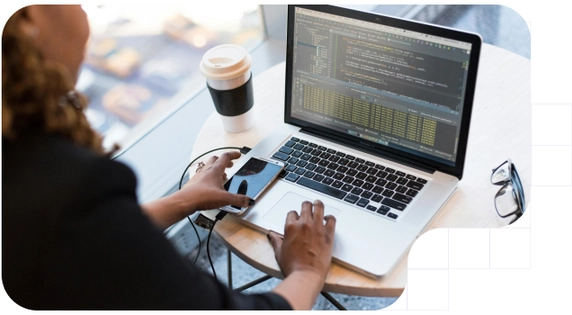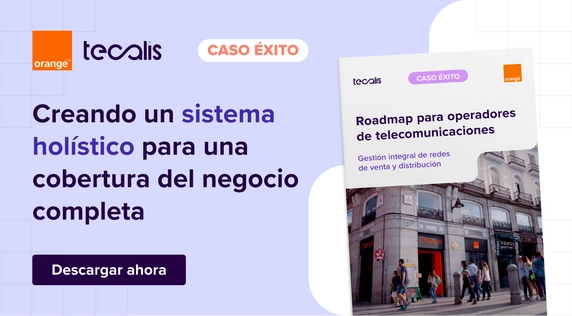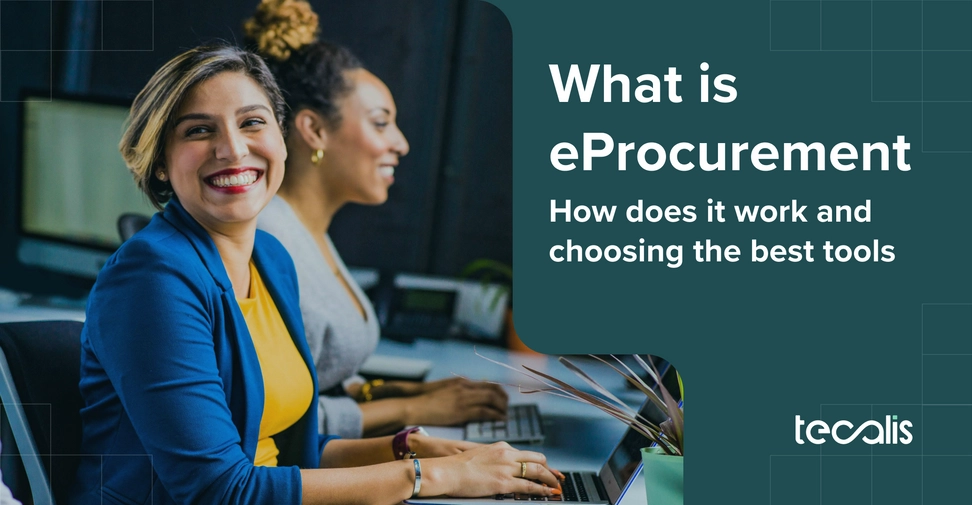Index
Get the latest news right in your inbox
Electronic procurement, known as e-procurement, is a system that uses information technology to automate and optimize an organization's purchasing and supply processes for goods and services, as well as related processes. This modern approach not only improves operational efficiency, but also provides greater transparency and control in procurement.
Also known as e-procurement, these practices and operations have been gaining importance in recent years, as they allow companies to enable new use cases resulting in great cost savings and the opening of a wide range of possibilities to offer more and better products and services.
In this article, we explore in depth what e-procurement is, its characteristics, functionalities, types, application examples, technological tools and the numerous benefits it offers to businesses in many industries.
What is e-procurement
E-procurement is the process of acquiring goods and services through digital platforms with large automation models. Even so, and more recently, this discipline and its associated technologies are increasingly used to optimize and automate all kinds of processes of a company, highlighting the commercial and sales channel management aspect.
This system integrates various supply chain functions, from purchase requisition to final payment, using specialized software and database technologies. The main objective of e-procurement is to optimize purchasing processes, reduce costs, increase efficiency, enhance compliance and security, and improve visibility and control of transactions.
Electronic procurement works across a wide range of activities including supplier sourcing, contract negotiation, order management and delivery tracking. By digitizing these processes, companies can significantly reduce the time and effort required to manage their procurement, while also minimizing the risk of human error and improving data accuracy.
These integrated e-procurement systems manage the entire procurement cycle of a company, from the identification of needs to the payment of suppliers. Different information and communication technologies are used through specialized software to carry out the different stages of the procurement process electronically.
In essence, e-Procurement digitizes and centralizes a company's procurement management, eliminating the need for manual and paper-based processes. This is achieved through the implementation of electronic platforms that facilitate interaction between the company and its suppliers, employees, sales channels or business partners, automating workflows, streamlining communication and improving transparency throughout the process.


Main features and functionalities of e Procurement
E-procurement encompasses various activities such as sourcing (finding and selecting suppliers or sales partners), order management, receiving goods and services, invoice reconciliation and payment. All of this is done through digital platforms and online tools, largely eliminating paperwork and manual processes.
Thus, eprocurement is characterized by several key functionalities that differentiate it from traditional purchasing methods. Some of the most salient features of e-procurement include:
- Process automation: e-procurement enables the automation of repetitive and administrative tasks, such as order creation and tracking, inventory management and invoice reconciliation or commission settlement.
- Electronic catalogs: Provides access to suppliers' digital catalogs, facilitating the search and selection of products and services.
- Integration with ERP/BSS systems: E-procurement systems are often integrated with other business systems, such as ERP (Enterprise Resource Planning) or BSS (Business Support Systems), allowing a more coherent and efficient management of the commercial resources of a business in all its channels.
- Transparency and control: Improves visibility into transactions and compliance with purchasing policies, reducing the risk of fraud and errors.
- Analysis and reporting: Provides analysis tools to monitor and evaluate the performance of purchases throughout the commercial network in real time, identifying areas for improvement and opportunities for savings.

E-procurement solutions usually have a wide range of functionalities to efficiently manage the procurement process and other business operations. Some of the most outstanding functionalities of e-procurement systems are:
- Electronic catalogs of products and services
- Online ordering and approvals
- Registration of new products and services on sales platforms
- Management of purchase orders, orders, point of sale stock, etc.
- Integration with ERP, BSS, CRM and accounting systems
- Receipt and control of electronic invoices
- Sourcing and bidding modules
- Management of contracts and SLAs with suppliers
- Reporting and analysis of expenses and other business metrics associated with purchases and sales
Most manual tasks, such as order creation, invoice approval and contract management, are automated, reducing the time and cost of operations through these new e-procurement models.
All purchasing-related information is stored in a central repository and connected to the OSS/BSS systems used at the points of sale, facilitating data access and analysis for strategic decision making. On the other hand, e Procurement platforms facilitate communication between the company and its suppliers, improving collaboration and efficiency in purchasing management thanks to platforms that are 100% automated and connected to sales and business activation tools.
Electronic recording of all transactions increases transparency in the procurement process, reducing the risk of fraud and errors, and e-procurement platforms help companies comply with applicable procurement rules and regulations.
Steps in the Procure to pay process
The e-procurement process has a series of stages and steps. Also known as "procure to pay" (P2P), it encompasses several stages that guarantee efficiency and effectiveness in procurement management from an integral model. Each company establishes its own e procurement processes and systems with its own stages and phases, but we can consider the following as generic and standardized to obtain a simple view of the e-procurement process:
- Identification of needs: It begins with the identification of the needs for goods or services within the organization.
- Purchase request: A purchase request (requisition) is generated and approved by the corresponding managers or according to the policies defined to be done in an automated way.
- Sourcing and supplier selection: Using electronic catalogs or requesting quotations, suitable suppliers are selected.
- Negotiation and contract: The terms and conditions of the purchase are negotiated, formalizing the contractual agreements. In the same way, this phase can be planned and models are created according to the type of operation, which is approved or not depending on what is marked or the moment (with dynamic models).
- Issuance of purchase orders: Purchase orders (PO) are issued detailing the products or services, quantities and prices agreed upon.
- Receipt of goods or services: Goods or services are delivered and checked for compliance with order specifications.
- Invoice validation and approval: Invoices from suppliers are received and verified, ensuring that they match purchase orders and goods received.
- Payment to suppliers: Finally, payments to suppliers are processed, completing the procurement cycle.
- Accounting and bookkeeping: Integration with ERP, BSS and OSS systems for bookkeeping and accounting.
- Reporting and analysis: Obtaining reports and metrics for analysis and decision making.
eProcurement related tools and technologies
The success of e-procurement depends on the tools and technologies used to implement and manage the various business processes. Some of the most common tools and technologies include:
- e-procurement platforms: Specialized software that automates and optimizes purchasing processes and other commercial elements, such as Tecalis Customer Hub.
- Inventory management systems: Tools that help companies manage their inventories efficiently and with direct connection to the different points of sale in their own and alternative channels.
- Supplier Relationship Management (SRM) Systems: Software that facilitates the management of supplier relationships and communications. This includes supplier search systems with KYB (Know Your Business) technologies.
- Electronic invoicing automation: Tools that automate the electronic invoicing process, such as Tecalis Sign.
- Electronic payment solutions: Platforms that allow secure electronic payments.
- Digital catalogs: Databases with the products and services of suppliers in systems known as punch-out.
- Mobile technologies: Apps for managing orders and approvals from mobile devices such as the one available in Customer Hub's Advanced Business Management Center.
- Artificial intelligence: Virtual assistants, chatbots and automated recommendation engines.
- Blockchain: Decentralized records for increased transparency and traceability. Complete tracking of orders and deliveries with audit trail and time stamp in all phases of the supply chain process (purchasing and procurement).
- Integration with ERP systems: Connection with central business management systems.
- EDI (Electronic Data Interchange): Electronic exchange of standardized documents between systems.
- Contract signing and negotiation tools: Digital and electronic signatures play a fundamental role in these systems, integrated by APIs generally.
- RPA automation of all types of procurement processes: Thanks to AI and RPA tools such as Tecalis Automation, companies have reduced their costs and brought errors to minimal levels.

Types of e-procurement
There are different types of electronic procurement, each adapted to the specific needs of organizations and system models. The main types of e-procurement are:
- Direct purchase: Involves the acquisition of materials and services that are used directly in the production of goods or services of the company.
- Indirect purchasing: Refers to the purchase of goods and services that are not directly related to production, such as office supplies and maintenance services.
- By auctions: The e-supply chain and e-procurement process is done by automated auctions connecting buyers and sellers directly. It can be e-reverse auctioning by working with both known and unknown suppliers.
- Specialized in B2G: Operations related to public administrations and governments, which have their own rules and standards of operation, stand out. There are also those specialized only in B2C or B2B.
If we take into account the technologies they use and the program model that works on eprocurement, we can find other types of e-procurement categorized as follows:
- E-sourcing (electronic profiling): The process of finding and evaluating potential suppliers using electronic tools.
- E-tendering: Involves the solicitation and receipt of bids through electronic platforms to select the most suitable supplier.
- E-invoicing: Consists of issuing and receiving electronic invoices, simplifying and speeding up the invoicing and payment process.
- E-payment: Refers to electronic payments, which reduces processing times and improves the security of transactions.
- Based on large volumes of information (e-informing): Requests are sent based on transaction information obtained through the Internet and market databases.
- Web models based on ERP constructions: Those that merged with other systems act in a coordinated manner to create, approve, place and forward purchase orders and manage logistics. There are extended models with goods and services that are not related to MRO products (e-MRO (Maintenance, Repair and Overhaul)).
- Electronic catalog (e-catalog): Platform with the catalogs of products and services of contracted suppliers in a Punch-Out system.
- Order management (e-ordering): Issuance, approval and follow-up of purchase orders. It is a part of the sub-process.
- E-procurement marketplaces (e-procurement marketplaces, ecommerce or e-marketsites): Virtual marketplaces of buyers and sellers directly connected and generally fully automated.

Examples and where to apply electronic procurement
E-procurement can be applied in a wide variety of industries and sectors (virtually all, regardless of whether it is a product or service business). Some examples include:
- Manufacturing: Manufacturing companies use e-procurement to manage the acquisition of raw materials and components needed for production.
- Retail: Retailers use e-procurement platforms to manage inventories, orders and supplier relationships.
- Telecommunications and utilities: In the telco and energy sectors, we have many examples of improved sales processes thanks to eprocurement.
- BFSI: In banking, financial services and insurance we find a variety of specialized systems as well as RegTech tools that use electronic procurement techniques to cross-sale banking apps, for example.
- Public sector: Governments and public institutions implement e-procurement to ensure transparency and efficiency in public procurement.
- Healthcare: Hospitals and clinics use eprocurement to acquire medical supplies and equipment efficiently.
- Technology: Technology companies use e procurement to acquire hardware, software and technical services needed for their operations.
- Professional services: Hiring of external services such as consulting, advertising, maintenance, etc.
- Regulated sectors: Perfect for securing all types of processes and acquisitions in highly regulated environments such as healthcare, energy, defense, etc.
Advantages and benefits of e-procurement
The implementation of an e-procurement system offers numerous benefits to organizations. In this way, e-procurement has become a key element in the digital transformation of sales and purchasing processes, maximizing operational efficiency and drastically reducing the costs associated with the supply chain. Among the most outstanding advantages and benefits of e procurement, we find:

- Cost reduction: By automating purchasing processes and eliminating inefficiencies, companies can significantly reduce operating costs.
- Increased operational efficiency in the commercial area: The digitization of procurement processes reduces the time and effort required to manage purchases, allowing employees to focus on strategic activities.
- Improved transparency and compliance: e-procurement provides greater visibility into transactions and compliance with purchasing policies, reducing the risk of fraud and errors.
- Improved control and management: Analysis and reporting tools enable companies to monitor and evaluate their purchasing performance, identifying areas for improvement and opportunities for savings.
- Stronger supplier relationships: Efficient supplier relationship management can improve collaboration and negotiate better terms and conditions.
- Integration and collaboration between areas: Direct connection with information systems and suppliers, collaborative work.
- Optimized expense management: Centralization of purchases, in-depth data analysis, identification of savings, etc.
- Improved service quality: Customer and end-user satisfaction as well as providing a better climate for motivated sales agents, employees and collaborators, partners.
In conclusion, e-procurement is an essential tool for modern organizations seeking to improve efficiency, reduce costs and increase transparency in their procurement processes. By adopting advanced technologies and automating procurement processes, companies can achieve a significant competitive advantage and better position themselves to meet the challenges of the global marketplace. Implementing a well-designed eprocurement system not only improves purchasing and sales management immediately, but also drives long-term growth and sustainability.
























